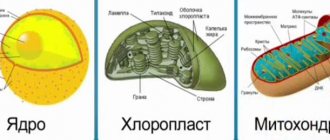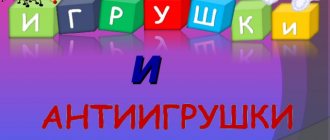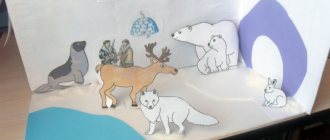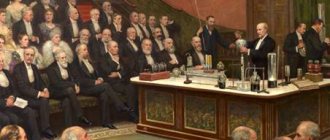Slavic dolls are amulets. presentation of a lesson for an interactive whiteboard on the topic
Slide 1
SLAVIC DOLLS-AMULS. History and traditions.
Slide 2
For thousands of years, not a single house in Rus' could do without amulets. People believed that amulets protected them from illness, the “evil eye,” predatory animals, natural disasters and various misfortunes.
Slide 3
The dolls were stuffed with straw, fabric and other materials, and threads and ropes were woven into their hair. And before the advent of rag crafts, ash ones were used, which were considered the first of all dolls that were used as amulets.
Slide 4
Making a doll was considered a purely female activity. As a rule, men could not even look at the process itself. Her fate and the life of her family and the entire clan could depend on the quality of a woman’s work. Therefore, before such an important task, representatives prepared and made dolls only in a good mood. The girl made her very first doll at the age of 12-13, and by the quality of the craft one could judge whether she was ready for marriage. The best crafts made were kept and formed part of the dowry.
Slide 5
If a good event happened in the family - a wedding or childbirth, then our ancestors always made dolls - in order to ward off the evil eye, damage, evil spirits and other troubles from a newborn baby, or so that a special doll for newlyweds “lovebirds” would help maintain the integrity of the unity of the new family
Slide 6
The bell is a doll of good news and its homeland is Valdai, where the Valdai bells came from.
Slide 7
At a wedding, a midwife or an adult relative placed a “swaddle” doll on the bride’s lap in order to protect the unborn child even before conception, so that the evil spirits guarding the married couple would see the “swaddled child” and move into him instead of a real child.
Slide 8
Dolls were also made for various other reasons - for example, if the husband was leaving for a long time, then a protective doll of the owner was made in his place and placed in a place of honor in the house. And if a woman in the family could not give birth, then another doll was made - Moskovka.
Slide 9
If it was necessary to leave the child alone, then so that he would not be sad or scared, a bunny was put on his finger, and the child was no longer left alone - he was with a talisman, a friend and a toy all in one person. In order for health to reign in the house, so that nothing could harm it, a “little egg” was made - a beautiful doll sitting on a bag of healing aromatic herbs.
Slide 10
The ten-handed doll is a helper doll. It got its name from the fact that a woman always does not have enough hands to cope with all the household chores. The “day-night” doll protected the peace of sleep at night and gave daytime joy and energy.
Slide 11
Krupenichka (Zernovushka) and Bogach are amulets of wealth and prosperity in the family, and it is desirable that they stand side by side in a pair.
Slide 12
Personal dolls were also made for each person - amulets made of fabric by tying, wrapping and twisting. Such dolls were responsible for all aspects of life, helped in all endeavors, and protected from all illnesses. These were the personal dolls of adults, their tireless protectors.
Slide 13
In Rus' there were also male dolls, a striking example of which is considered to be Spiridon the solstice. A mandatory attribute of such a craft is a wheel, because the essence of Spiridon is to turn the sun, to do the most important thing in the entire cycle. It is believed that such a Spiridon can change a person’s life for the better.
Slide 14
Kuvadka dolls warmed the cradle before the baby was born, and then hung over the crib after the baby was baptized. Usually there were several such Kuvadoks and different colors.
Slide 15
The bird of happiness is considered the guardian of family happiness and prosperity. Domovushka (Domovikha) is like a strong and stable housewife, she knows when to stop everything and makes sure that there is always a “remainder” in the house and that the owners do not give away the last.
Slide 16
Doll amulet “Share” - the personification of fate. Its main feature is its braid. The doll hangs from it, and this means “to catch fate by the tail.” Raised hands are a sign of joyful greeting. A talisman of optimism, joy and good mood. Gifted with the words: Don’t be sad, don’t be discouraged, don’t give up!
Slide 17
The Goat doll is also a symbol of fertility and good mood. The goat carries the image of New Year's holiday and fun and, as it were, wishes everyone good spirits, inexhaustible energy of life, good harvests in all fertile fields. And also live in abundance, peace and joy! Homemade Maslenitsa is one of the most powerful home amulets. So that there is prosperity, so that life is “like clockwork,” so that healthy children are born. Stored in the red corner.
Slide 18
Good advice Don't forget the most important advice - everything you believe in can come true. You don’t have to work too hard to make your desire come true; you just need to calmly work in the right direction and ask the Universe to help you. The doll is certainly not the only one, but one of the most pleasant guides for helping you. Be happy !
Slide 19
thank you for your attention Prepared by teacher Domoratskaya Lyubov Vladimirovna
Presentation “Folk dolls”
Nina Malyina
Presentation “Folk dolls”
Presentation
"Folk dolls"
made by Malykhina N.M.
1 slide
Folk dolls
2 slide
What dolls did our ancestors have?
Previously, in every peasant house there were many rag spin dolls (motan dolls)
. They served as amulets for homes, children, sleep, households, had a cult, ritual purpose and at the same time were the most common children's toys
3 slide
Pelenashka
The doll was made from a piece of worn homespun clothing, which absorbed the warmth of the hands that made it. It was believed that a piece of vitality was transferred to the doll
To confuse evil spirits, a swaddled doll was placed next to the baby in the cradle, where it remained until the child was baptized.
4 slide
Stonefly
With the arrival of spring, girls made bright, cheerful Vesnyanka dolls. Stoneflies are a talisman of youth and beauty. Traditionally, this doll is very bright with unusual colored hair. Girls gave such dolls to each other, wanting to remain young and attractive.
5 slide
Martinichki
These dolls were an invariable attribute of the “invocation”
spring, in which young people and children mainly participated. Dolls were knitted in pairs: from white threads - a symbol of the passing winter, from red threads - a symbol of spring and the hot sun.
The name Martinichka already indicates that this doll was made in March . She was called out
spring, brought its beginning closer, celebrated and rejoiced at its arrival. Martinichki were pinned to clothes, tied to belts, and hung in the house and in the yard.
6 slide
Krupenichka
Krupenichka was considered the main doll in the family . Our ancestors decorated it richly and carefully kept it for a year in the most visible place in the house.
The basis of the doll was a bag of grain. In ancient times, these dolls were created after the harvest, filling them with selected grain collected from the field. This is where the sowing season began, first sowing the grain taken from this pupa.
7 slide
Ten-handle
In the fairy tale about Vasilisa the Wise, a wonderful doll is mentioned that helped Vasilisa in all matters. And everything went well for her, and any work went smoothly.
What kind of doll is this?
When our ancestors finished their sowing and harvesting work, handicraft gatherings began with the making of the “Ten Hands” amulet helper doll .
The ten-handle is the best helper in household chores. This doll was given to girls who were preparing a dowry for themselves or to a young mistress, so that everything would be in order, so that everything would go well. doll's ten arms allow her to do everything!
8 slide
Maslenitsa
Homemade Maslenitsa was considered a strong talisman for the home. She was sure to be in the house where the newlyweds lived, she was welcomed by the newlyweds and carefully kept at home, as a symbol of prosperity and healthy offspring of the young family. Homemade Maslenitsa was kept in the red corner or at the entrance to the house.
Ribbons were hung on her hands, and by tying them, people made wishes and believed. and wishes certainly came true!
They kept it for a year and burned it along with the straw.
Slide 9
Fever
The role of the Lichomaniac is to attract the attention of the villainous disease that has flown into the house: the evil spirit of the disease will fly into the house in search of its victim, see the bright, elegant dolls of the Lichomaniac, think that it is a person, and move into one of them...
Dolls that had served their time were burned once a year. Burning at the stake, Lihomanka lured trouble out of the house.
10 slide
Rules
making Slavic amulets:
1) You can’t make a talisman for yourself, but you can for any loved one. Moreover, amulets made by blood relatives: father, mother, brother, children are considered the strongest. Marital ties are traditionally not considered consanguinity, but if the marriage is harmonious and happy, mutually created amulets also have great power.
2) You cannot force or force anyone to make a talisman. Making a talisman is possible only on voluntary terms.
3) When making a talisman, the master must be calm and pure in thoughts. Because during manufacturing, the amulet will record the surrounding energy.
4) It is necessary to intelligently approach the choice of material from which the amulet will be made, because silver, gold, stone, wood, or any other material has different properties.
5) The person making the amulet must be aware of what he is making and what effect this amulet has. Amulets carefully crafted by an experienced craftsman have a stronger effect.
6) The amulets are made by hand, piece by piece. Conveyor production and stamping of identical products are not permitted.
Taken from the site: https://gifakt.ru/archives/index/slavyanskie-oberegi-i-pravila-ix-izgotovleniya/
Project “Doll - amulet”
Project “Doll-amulet”
Purpose of the study:
Arouse children's interest in Russian folk culture.
Project objectives:
- Get acquainted with the history of the origin of the folk doll.
- Study the types of dolls.
- Study the technology of making folk dolls.
- Make amulets and gaming dolls.
Project implementation stages.
- Acquaintance with the history of the emergence of folk dolls.
- Study of types of dolls.
- Study of doll making technology.
- Making amulets and gaming dolls.
- Project protection
Progress of the lesson
Far beyond the mountains, beyond the seas, behind the dense forests there is a huge Country of Childhood. You can’t come there by car, you can’t sail there by boat, you can’t even fly there on a rocket. But you can simply be transported there on the wings of fantasy, imagine this world, invent it yourself. All the children of the Earth have visited this country, and even your parents and grandparents when they were little. They were there with their first friends - toys.
When your parents and grandparents were little, they had completely different toys.
They sewed dolls for themselves from rags, made them out of straw, my grandmother made a doll out of logs, dressed them in rags and played with them. They made toys from spools of thread, and made beads from rose hips and rowan berries.
There were many dolls that served as amulets.
What do you think the project task
stands before us today?
- Study the technology of making folk dolls.
- Make a doll amulet.
Carrying out work according to instructions
Defense and summing up
We learned how to make amulets dolls with our own hands. All the work
we performed together in pairs: we helped each other; fixed it together
errors, if any; turned to the teacher for advice
The chosen topic seemed interesting to us because the doll is the oldest and most popular toy. It is an indispensable companion to children's games and the most accessible work of art for children. Nowadays you can see many beautiful toys on store shelves. But they are made in a factory and do not carry the warmth of the soul of their creators. Therefore, we believe that in the 21st century children should again see not only toys made by machines, but also with their own hands.
We decided to study this topic to find out when traditional rag dolls appeared, what traditional dolls the Russian people had, what purpose each doll had, and to what age children played with dolls. It was also interesting to learn the technology of making a traditional folk doll.
Therefore, the subject of our research was traditional folk dolls.
This doll can be hung at home and will protect it, and it can also be given as a gift to family or friends. But with this doll, we decided to go to our kindergarten and show them a master class on how to make it.
Well done guys, you did a very good job and you receive certificates of merit for your work on the project task.
Instructions for performing the work
Now let's start making a traditional folk amulet doll.
To do this, we need to take 5 rectangular flaps, scissors, thread, and cotton wool.
- A piece of cotton wool is placed on a plain rectangle of fabric
(picture 1)
- Rewindable with thread
(Figure 2)
- The left and right ends are rewound. This is the head and hands of the doll.
(Figure 3)
- We take 2 colored rectangles and place a piece of cotton wool in the middle of each.
(Figure 4)
- One rectangle is rewound with thread and the other, in the same way, is rewound with thread.
(Figure 6)
- The details of Figure 6 are tied together
(Figure 7)
- Figure 3 connects to Figure 7.
(drawing 
- A piece of fabric (scarf) is tied to the head of the resulting figurine.
(Figure 9)
- A rectangular piece is tied around the doll's waist (apron).
(Figure 10)
- The Vepsian doll is ready.
Planning and progress sheet
for the task
Topic chosen by the group
______________________________________________________________
write down your chosen topic
Project presentation form.
Check
the form you choose:
A. Making a doll
B. Computer presentation
Start of work __ hour ___min End of work __ hour ___ min
| What we do | Who is doing | Completion mark (+ or –) |
| 4. | ||
| 5. | ||
| 6. |
Self-assessment sheet
Last name and first name
_________________________________________________
Evaluate your group's work.
Mark the answer option with which you agree (agree).
- Did all team members participate in the project?
A. Yes, everyone worked the same way.
B. No, only one worked.
B. Some worked more, and some less.
- Did you work together? Were there any quarrels?
A. They worked together, there were no quarrels.
B. They worked together, argued, but did not quarrel.
B. It was very difficult to negotiate; it didn’t always work out.
- Do you like the results of the group's work?
A. Yes, everything turned out well.
B. I like it, but it could be done better.
B. No, I don’t like it.
- Evaluate your contribution to the group.
Mark the desired location on the ruler with an x .




